
Expressionism in interior design - the style of freedom and youth
Expressionism in interior design (from the Latin word "expressio" meaning "expressiveness") is one of the most vibrant, energetic, and exotic interior styles. Expressionism in interior design is often preferred by young people who are drawn to its brightness, lack of strict rules, and the freedom and dynamism that resonate with the youthful spirit.
 Expressionism in interior design. Expressionist flat interior
Expressionism in interior design. Expressionist flat interior
Expressionism in interior design is highly emotional and can even be somewhat theatrical. In its most exaggerated forms, it can be aggressive and capable of shocking unprepared guests. One might imagine the house of Salvador Dalí or Wassily Kandinsky to be like that. Every visitor in such a house feels as if they are a guest at the most captivating spectacle of their life.
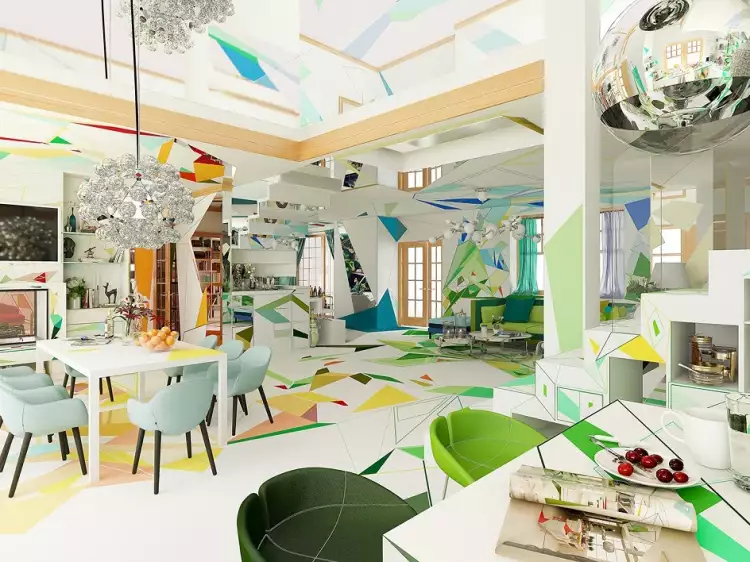 Expressionism in interior design. Dining room interior in Expressionist style
Expressionism in interior design. Dining room interior in Expressionist style
Key Characteristics and Features of Expressionism in Interior Design
Expressionism as a style in interior design fully lives up to its name. It is about feelings, moods, optimism, lightness, playfulness, color, and light. This design direction resembles avant-garde in breaking all stereotypes. However, unlike avant-garde, expressionism is softer, more harmonious, romantic, and cozy. To create such a refreshing, emotional, and creative atmosphere, an impeccable sense of style and knowledge of certain rules are required.
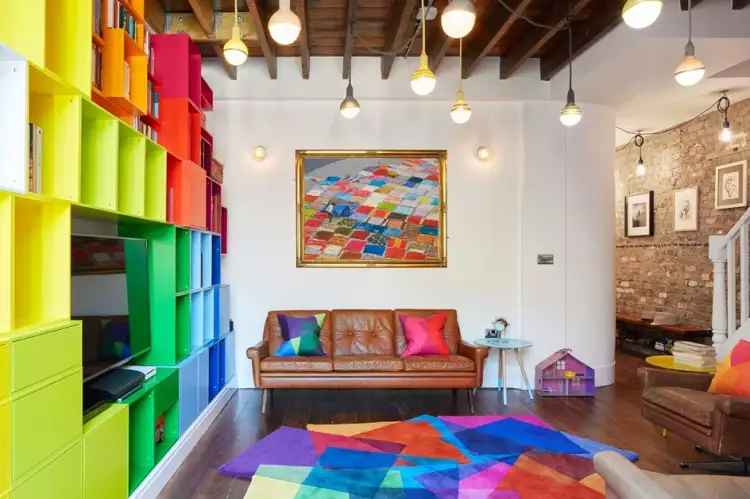 Expressionism in interior design. Expressionist style colourful living room interior
Expressionism in interior design. Expressionist style colourful living room interior
Here are the factors to consider when creating an interior in the expressionism style:
- Architecture. This style is characterized by playing with space and dynamics. Reserved canonical forms coexist with distorted or intentionally exaggerated elements, sometimes even bordering on the grotesque. The most important aspect is diversity, which contributes to the overall emotional background. There are no meticulously arranged typical chairs or precisely measured window openings. Complex multi-level ceilings, wide rectangular or square windows, oval doorways, round wall niches, the combination of simple geometry with complex Gaudi-like elements—this is all about expressionism. It allows for complete creative freedom, but it's important not to overdo it.
- Materials. There is a wide range of materials to choose from. There are no strict rules. Any types of textiles, plastic, wood, glass, stone, paper, ceramics, or their imitations are suitable. There is no strict adherence to natural or synthetic materials. The main rule is that they should be smooth and visually light—complex and heavy textures are not appropriate. Additionally, it is important to remember that gloss tends to cheapen the overall look. In a noble and expressive interior, gloss should be used selectively or avoided altogether.
- Color Solutions. An expressionism-style interior is highly pictorial. Both vibrant shades (excluding acidic tones) and restrained hues are welcomed. It's important not to overdo it; color combinations should be harmonious, and it's better to avoid heavy, deep, and dark colors or use them sparingly to create contrasting accents.
- Finishes. Expressionism is all about creativity. A "expressive" environment calls for neutral wall finishes, which serve as a background for the rest of the space. Walls can be painted, covered with fabric or wallpaper, or made of other materials. When it comes to wall and floor finishes, preference is given to matte textures, while the ceiling can be glossy or mirrored.
- Furniture. Here, too, imagination can soar. Woven or heavy, monumental sofas can coexist with delicate coffee tables, hanging cocoon chairs, and "Scandinavian-style" chairs. Proportions and rules of harmony should be respected. Cluttering the space with furniture is inappropriate, so storage systems are best placed in niches.
- Textiles. Textiles are welcomed in an "expressive" interior, but it shouldn't overpower the space. Cushions with African patterns, carpets with abstract designs, dense upholstery, tapestry paintings—these elements are suitable. However, it is better to leave windows uncovered or install lightweight blinds. "Ornamentation" in textile elements such as rich draperies, ruffles, lace, and the like, is not favored. The simpler, the better.
- Décor. The main requirement for décor is that it should not visually clutter the space. Expressionism is about lightness, dynamism, freshness, and mood. Paintings and reproductions in the same style, small trinkets, unusual vases, and live plants are appropriate.
- Lighting. Bright and picturesque expressionism is a story about the sun. A spacious environment requires maximum natural light, which can be complemented by artificial lighting. Hidden light sources with various usage scenarios are necessary.
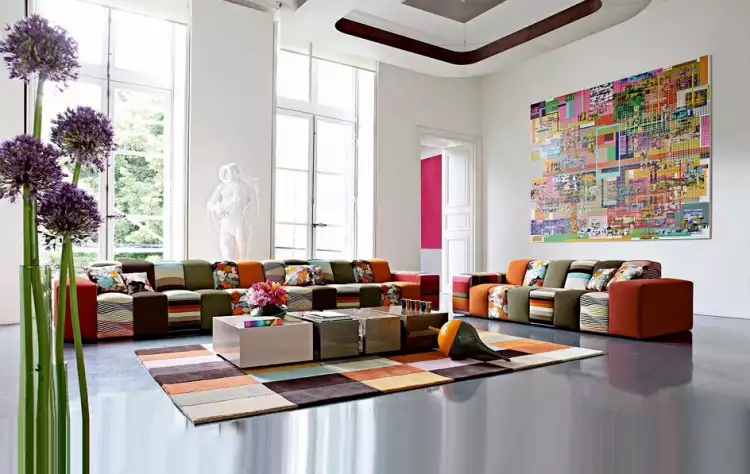 Expressionism in interior design. Expressionist Style Room Interiors
Expressionism in interior design. Expressionist Style Room Interiors
History of Expressionism in Interior Design
Expressionism in interior design is a relatively new phenomenon. The style emerged at the turn of the 19th and 20th centuries (during the so-called era of modernism) when expressionists – artists, writers, and musicians – took the stage and revolutionized it. The main idea behind expressionism is that art should not reflect reality; it should only express the emotions of the artist.
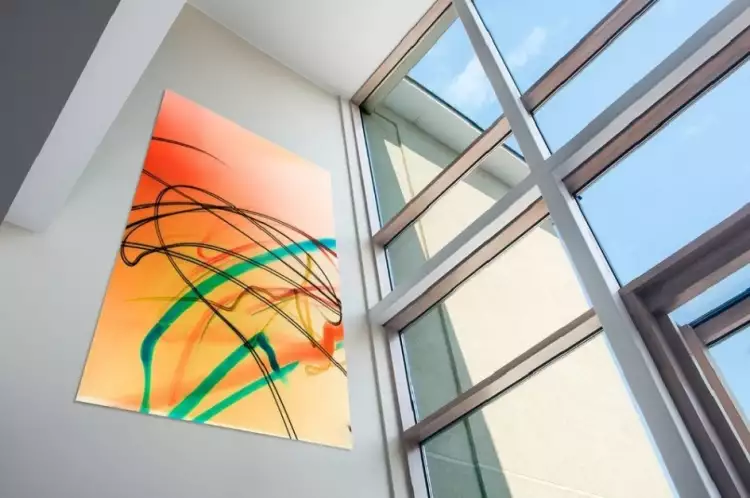 Expressionism in interior design. Expressionist Style Décor
Expressionism in interior design. Expressionist Style Décor
In Europe during those years, things were not particularly joyful, so the vibrant and lively expressionism spilled over into everyday life. In 1921, the Einstein Tower was built, which became an iconic example of this style in architecture. Subsequently, the expansion of materials and textures led to the emergence of vibrant and dynamic elements in home decor. In the 1950s and 1960s, the style firmly entered the fashion scene and has remained popular to this day.
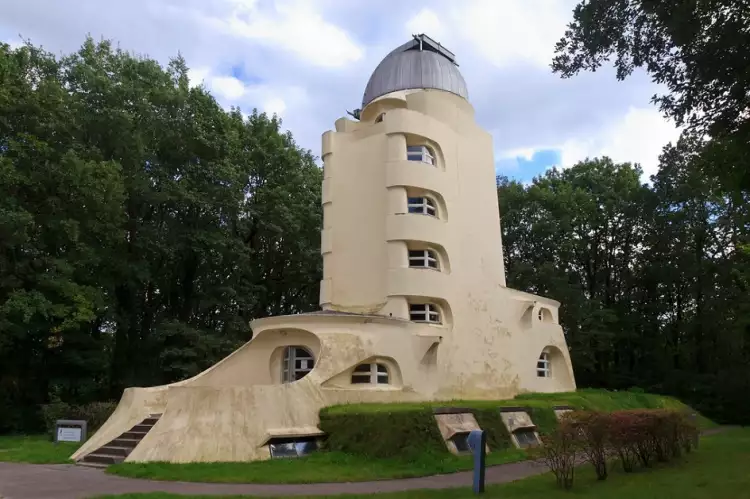 Expressionism in interior design. Expressionist Einstein Tower
Expressionism in interior design. Expressionist Einstein Tower
Expressionism in interior design is a choice of the young and joyful. Age is almost irrelevant here; what matters is the state of the soul. With skillful decoration, an "expressive" home or apartment becomes a place of strength, always ready to recharge its owners and their guests with energy and optimism.
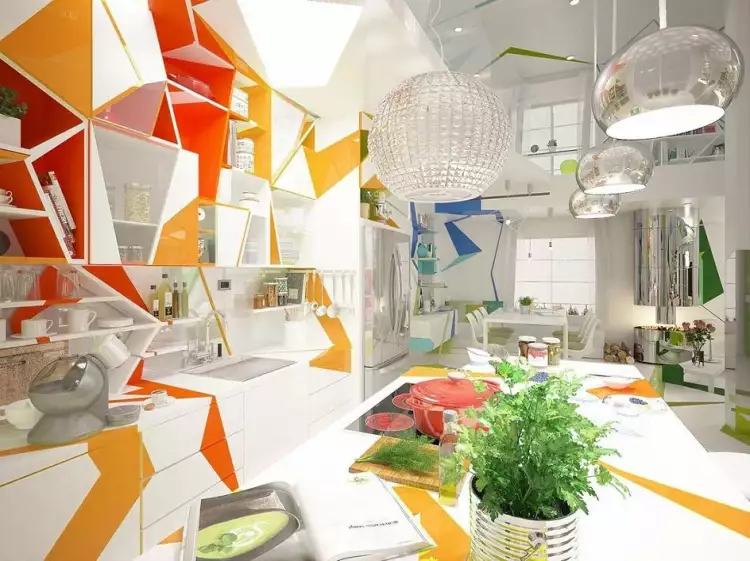 Expressionism in interior design. Expressionism Style Kitchen Interior
Expressionism in interior design. Expressionism Style Kitchen Interior
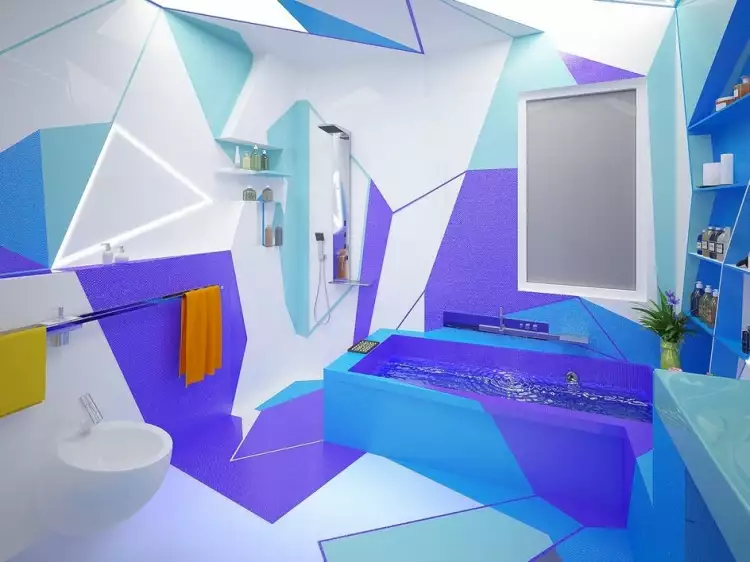 Expressionism in interior design. Expressionist bathroom interior
Expressionism in interior design. Expressionist bathroom interior
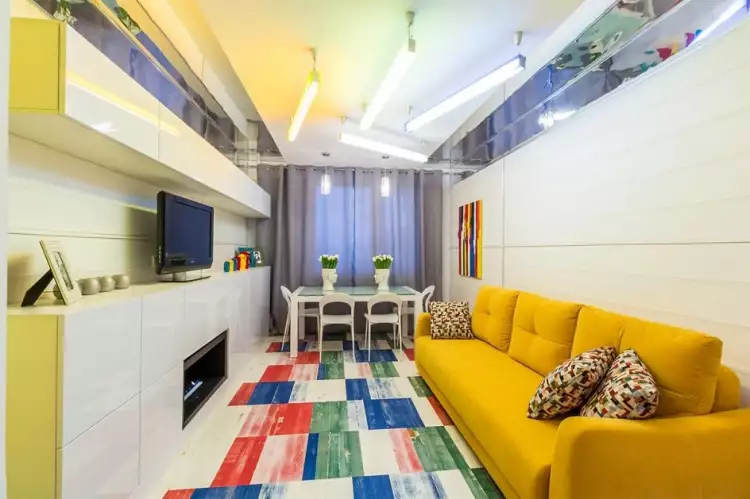 Expressionism in interior design. Expressionist Fireplace Zone Interior
Expressionism in interior design. Expressionist Fireplace Zone Interior
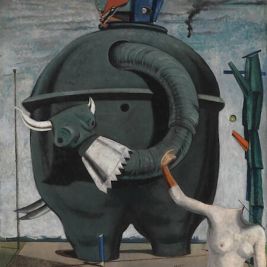 Modernism in painting - a different interpretation of reality
Modernism in painting - a different interpretation of reality 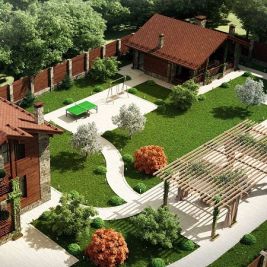 Design is a captivating process of artistic planning
Design is a captivating process of artistic planning  The top 10 most famous Italian artists - the greatest masters of painting in Italy of all time
The top 10 most famous Italian artists - the greatest masters of painting in Italy of all time  KPM Berlin: Production of exquisite porcelain with a 250-year history
KPM Berlin: Production of exquisite porcelain with a 250-year history 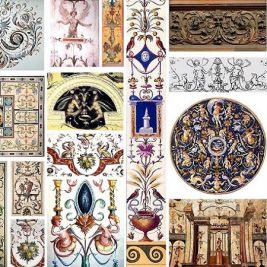 Grotesque is an eccentric art with harmless humor
Grotesque is an eccentric art with harmless humor  Numismatics is a serious scientific discipline or enthusiastic collection of ancient coins
Numismatics is a serious scientific discipline or enthusiastic collection of ancient coins  Icon - a sacred object in Christian culture: types, distinctive features, history
Icon - a sacred object in Christian culture: types, distinctive features, history 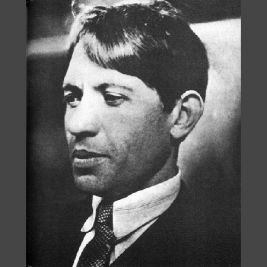 Chaim Soutine - an unsurpassed master of expression
Chaim Soutine - an unsurpassed master of expression  Silver - a noble metal
Silver - a noble metal  Mosaic - the art of creating a complete picture from many small individual pieces
Mosaic - the art of creating a complete picture from many small individual pieces